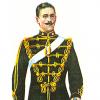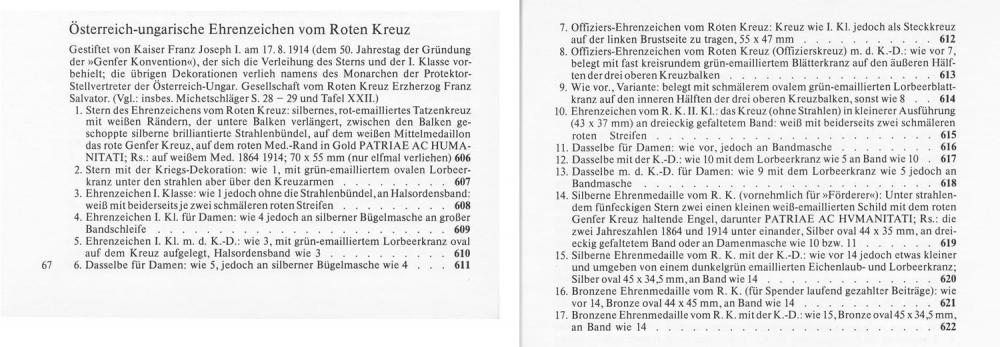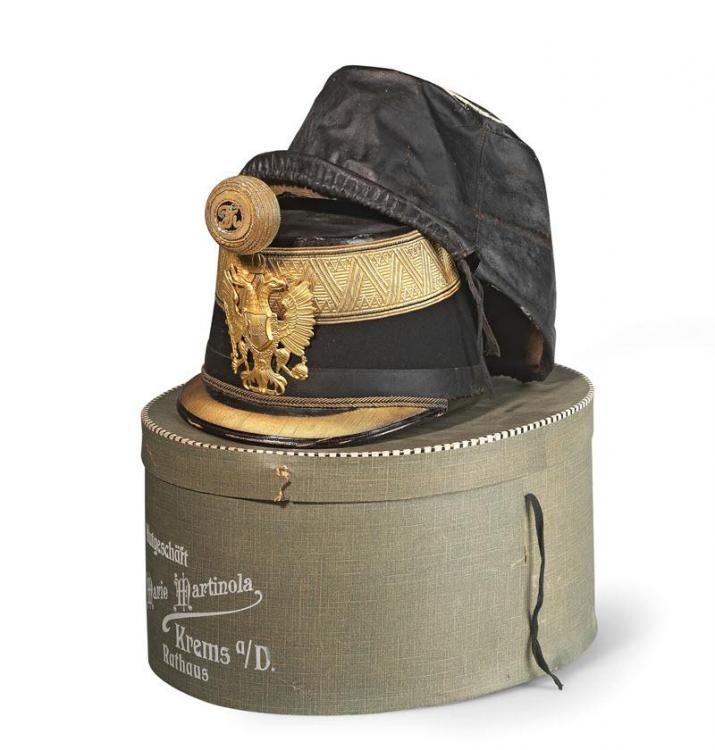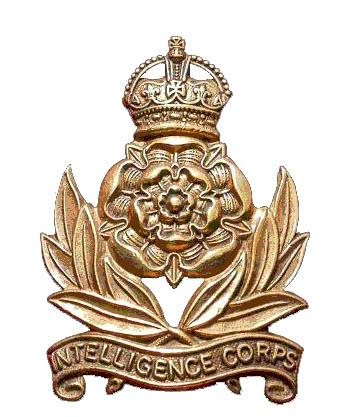-
Posts
581 -
Joined
-
Last visited
-
Days Won
2
Content Type
Profiles
Forums
Blogs
Gallery
Events
Store
Everything posted by Trooper_D
-
Google translate tells me that 'Riding Club' in Slovak is 'Jazdecký Klub' so I suspect that that accounts for the JK in VJK, making this the membership (?) badge of a riding club in Košice rather than anything military.
-
Google 'Order of the Militia of Christ' and then choose 'images' view of the results where you will see many examples of this cross. There is also a thread on this very site about this Order (which appears to have had a slightly murky past),
-

Belgium Belgian 4 th lancer
Trooper_D replied to Stuka f's topic in Northern European & Baltic States
What an interesting back story, Stuka. I am not familiar with the way the Belgian army of the time trained officers. Was it necessary to be an NCO for a period of time before you could become an officer-cadet, as was the case in the German-speaking lands? -

Belgium Belgian 4 th lancer
Trooper_D replied to Stuka f's topic in Northern European & Baltic States
An interesting find (or purchase, perhaps), Stuka! I have always had a liking for the Belgian Lancer dolman (and have a very moth-eaten one, myself). Can you clarify for me, is it an original photograph which has been enlarged more recently, do you think? I see a coat of arms in the top right corner. Is this a later addition, in your opinion? Have you researched the coat of arms to identify the subject of the portrait? Sorry, to ask so many questions -
I don't know the answer to your question, 1812 Overture, but Luxembourg is not part of Central Europe as generally understood. You will find all the Luxembourg questions posted in the Northern and Baltic States sub-Forum and will have a good chance of getting the information you seek, there. Good luck with your search for an answer.
-
The Royal Exchange is a building in the City of London with a long history of commerce so it is no surprise to find a retailer (or even a maker) of edged- and other weapons located there. Even today, it has retail shops either inside or round its exterior. https://en.wikipedia.org/wiki/Royal_Exchange,_London Googling >lacy "67 royal exchange" london< will give you lots of results referencing 'Bennett Sword Cutler to the Prince of Wales 67 Royal Exchange'. However, this link is for a pistol signed “Lacy, #67 Royal Exchange, London” so either Lacy was the predecessor to Bennett or they shared a premises, I would think. http://www.icollector.com/Over-and-under-tap-action-flintlock-two-shot-pistol-signed-Lacy-67-Royal-Exchange-London-The-p_i17738889
-

Land Transport Sword
Trooper_D replied to radarone's topic in Great Britain: Militaria: Badges, Uniforms & Equipment
I'm liking your classification system a lot, Brian -

Land Transport Sword
Trooper_D replied to radarone's topic in Great Britain: Militaria: Badges, Uniforms & Equipment
Radarone The Royal Armouries hold a number of examples of this sword. You (and Brian, if you haven't already seen it) will, I think, be interested in the discussion about the type in the Notes section at the end of this page, https://collections.royalarmouries.org/object/rac-object-7796.html -

Wearing other state orders, Chinese Empire officials
Trooper_D replied to 1812 Overture's topic in China
An absolutely amazing series of photos, 1812 Overture, thank you. You have opened my eyes to aspects of the late Chinese Empire/early Chinese Republic period I wasn't previously aware of. In particular, some of the personalities you have shown us have prompted me to investigate them further. -

Order of British Empire MBE
Trooper_D replied to Noor's topic in Great Britain: Orders, Gallantry, Campaign Medals
The leopard's head is the mark for the London Assay Office (the lion indicates that it is sterling silver, of course). This page explains this and other Assay Office marks http://www.silvercollection.it/DICTIONARYDECRYPTINGUKSTERLINGMARKS.html I am not completely convinced that the date mark is for 1919 as I can't see the riser for a gothic lower case 'd'. Rather, it looks like a gothic 'o' (1929) to me. Perhaps that can only be confirmed by another look at the letter through a loupe and a comparison with the date letters on this page, https://www.silvermakersmarks.co.uk/Dates/London/Cycle 1916-1935.html -

Westphalian crownorder and medals (1807 - 1813)
Trooper_D replied to augustin1813's topic in Napoleonic Wars
Thanks for clearing that up, Jacques. So it's unique for the 'Commander-in-chief' rather than being for what would have been - even without the Orders insignia on the cuirass - the best dressed cavalry in Europe! -

Westphalian crownorder and medals (1807 - 1813)
Trooper_D replied to augustin1813's topic in Napoleonic Wars
This looks like an interesting book, Jacques, on a subject I - for one - don't know anything about. Perhaps one for my Christmas present list I am intrigued by the blingtastic helmet and cuirass as I have never seen one like it before. Can you tell me more about it or, at least, where the image comes from. Thanks in advance. -

Austrian Red Cross 1864-1914 & 1923 group
Trooper_D replied to larsb001's topic in Austro-Hungarian Empire
Thank you for your useful clarifications and context, Tifes, particularly your observations on the award of the War Decoration. -

Austrian Red Cross 1864-1914 & 1923 group
Trooper_D replied to larsb001's topic in Austro-Hungarian Empire
As far as I understand it, this is a state award with no connection to the International Red Cross. I am attaching the section on the award in von Procházka's Österreichisches Ordenshandbuch, which - if you read German - will give you a better understanding. We know that the 1864-1914 Red Cross Order without the krieg dekoration (the laurel wreath) was awarded in return for a subscription (crudely put, the larger the subscription, the higher the award). The award with the krieg dekoration was only given, I understand, for appropriate war service. That being the case, I wonder what a Dane would have done to warrant it? Any thoughts? -

Austrian Red Cross 1864-1914 & 1923 group
Trooper_D replied to larsb001's topic in Austro-Hungarian Empire
These are two different awards with different founding constitutions and, perhaps, different awarding criteria, are they not, Lars? That being the case, there should be no reason why both shouldn't be worn, I would have thought. I have a question of my own, if I may? What is the (national?) significance of the pentagon shape of the ribbon? Danish? I ask because I have a 1864-1914 Red Cross Order mounted on a similar ribbon. -

Austria-Hungary A General with the "Literis et Artibus" Medal
Trooper_D replied to Elmar Lang's topic in Austro-Hungarian Empire
Just to add to Tomas's comprehensive posting, here is a link to a most interesting journal article, in English, by Jan Županič on the subject of re-ennoblement in the KuK, Re-ennoblement and nobility issues at the dawn of the Austro-Hungarian Empire (2009) In his introduction, he gives a good explanation of how a bourgeois soldier could become ennobled under the 30-year service rule. -
Andreas I understand why you have written this but, in fairness to 1812, CCJ doesn't own the copyright of the photos which started this thread. Indeed, if we only posted photos where we did own the copyright, this would be a rather image-poor site, I think. That having been said, I agree that you are correct by the letter of the law.
-
A squadron of Cossack Cavalry bearing down on them?
-
Members might be interested to see that the Dorotheum has a KuK infantry officer's tschako and its wet-weather cover for sale, a photo of which I attach (a super-size version can be found at the link below. Although I have seen illustrations before - I seem to remember that it was shown in one of the postcards Ludwig Koch illustrated for the BKWI company - I have never seen a good photo of one of these covers before. The picture of the box is a bonus! Details of the sale here
-

Help identify a button
Trooper_D replied to j-sk's topic in Great Britain: Militaria: Badges, Uniforms & Equipment




